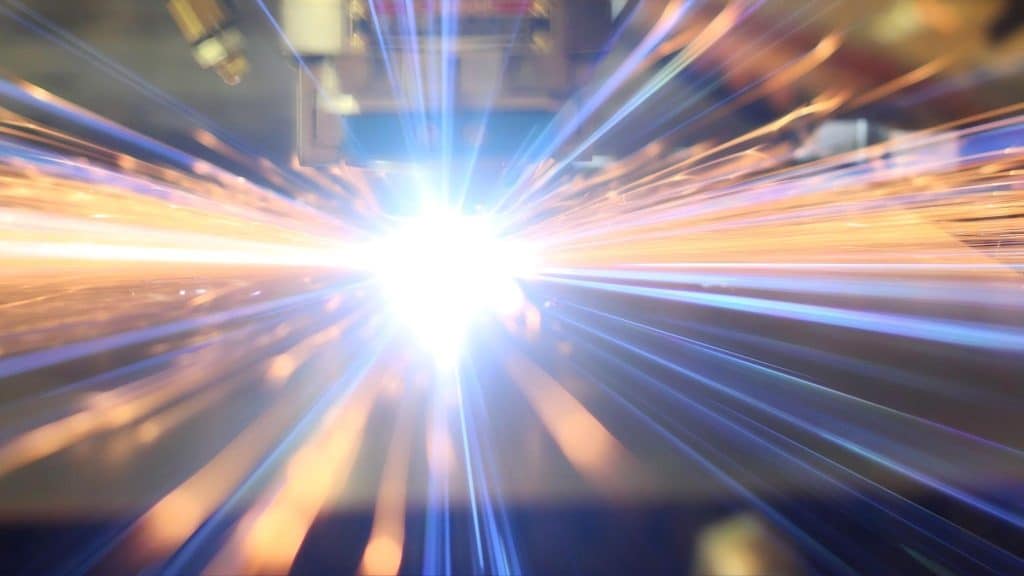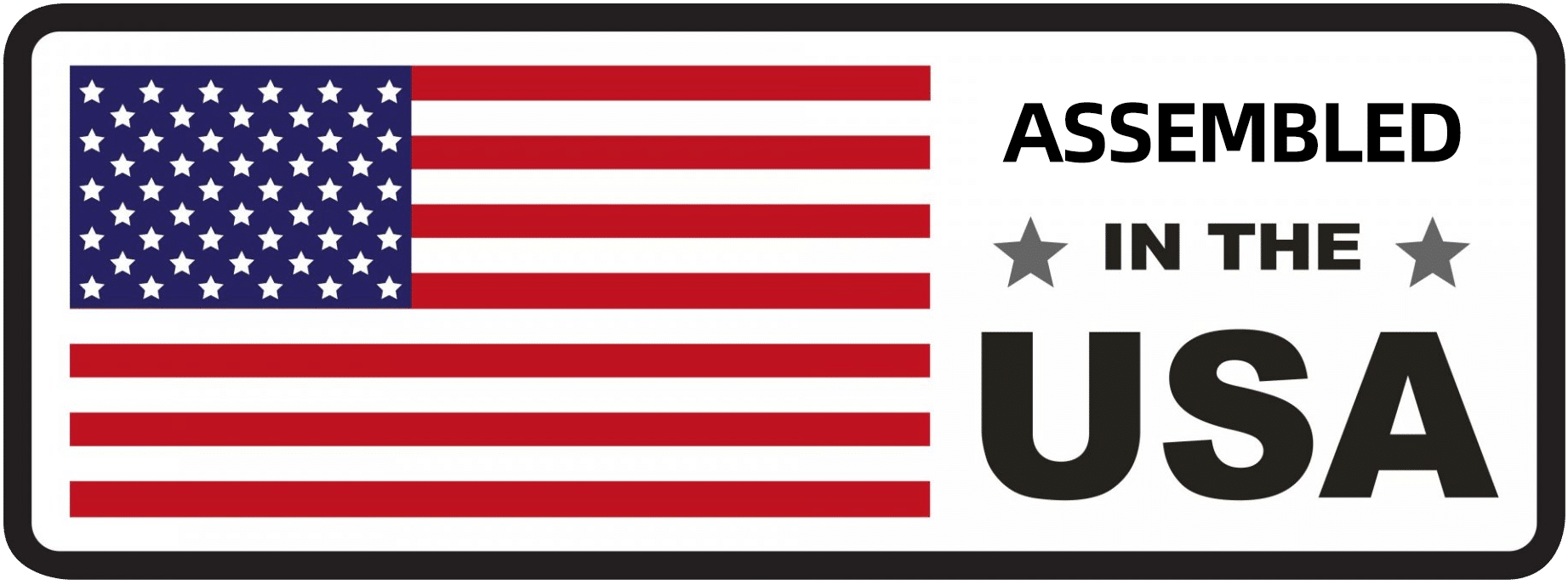
As manufacturers strive to scale up production for higher returns, new welding methods have emerged, one of which is fiber laser welding. This technology applies optical fibers (usually made of silicate glass) to convert light from diodes into a high-power laser beam. This beam melts workpieces and enables fusion upon cooling.
In this article, we provide an in-depth discussion of fiber laser welding and its benefits to modern manufacturing.
How Does a Laser Fiber Welder Work?
In fiber laser welding, a glass fiber is doped with rare earth elements like ytterbium (Yb), erbium (Er), and neodymium (Nd) to produce a laser light. This beam of light melts and penetrates the metals, which leads to the formation of a weld area.
The fiber laser is generated this way. The doped preform (glass fiber + rare earth elements) is heated and drawn into a thin optical fiber. Then, a pump or laser diode emits energy into the doped fiber. The “pumping” excites the dopant particles, which triggers them to excite other ions. This results in an amplified chain reaction that produces the laser beam.
The laser beam produced possesses high energy that can create narrow and deep welds even on thick or dense materials. A laser fiber welder position focuses the beam onto the target welding spot, which results in rapid melting of metal and a weld pool where the workpieces can be fused. Once the pool cools, a robust weld is formed.
What are the Benefits of Using a Fiber Laser Welding?
Many industries, including the aerospace, automotive, electronics, and medical fields, use fiber laser welding for its top-level precision, efficiency, speed, and weld quality. Here are the upsides of using fiber laser welding for manufacturing and metal fabrication.
High-Speed Welding Process: Fiber welding generally exceeds the average speed of all traditional welding methods (e.g., MIG and TIG). Estimates indicate that its speed can reach 50 mm/s for thin stainless steel.
Extreme Welding Precision: In this welding technique, the high-energy laser hits the target to an impressive precision of <0.1 mm weld seam width. This means that fiber laser welding can target hard-to-reach or small areas, or deal with complex geometries with its impressive precision.
Minimal Heat-Affected Zone (HAZ): Due to fiber laser welding’s ultra-precision, it produces a small HAZ that limits thermal distortion. It can maintain the material’s inherent metallurgical properties, which translates to stronger and durable welds. Moreover, the smaller HAZ results in cleaner welds even without post-weld cleanups.
Cost-Effective Welding Solution: Compared to TIG and other arc welding methods, fiber laser welding saves around 80% to 90% of energy. This is due to the high precision and efficiency of the laser beam that focuses energy on a targeted spot.. Moreover, the high welding speed of this technique can boost the manufacturer’s turnaround time, which translates to significantly lower operating costs in the long run.
Automation-Ready: Most laser fiber machines are equipped with advanced software that supports automated processes. This helps operators for high-volume production lines that require quick turnaround times.
Applications of Fiber Laser Welding
Industrial products today are typically composed of intricate and tiny components or dissimilar metals, which require advanced welding techniques. Fiber laser welding has emerged as one of the most efficient and effective solutions to meet these requirements nowadays.
Discover some industrial applications of fiber laser welding below.
Automotive
Fiber laser welding is often applied in the fusion of high-strength steels (AHSS) and aluminum alloys used in lightweight vehicle frames. Laser-welded components in the vehicle frames can improve fuel efficiency and crash performance, which conventional welding techniques are incapable of. Another common application is in the production of battery internal components (usually in electric vehicles) such as cells and modules.
Aerospace
Due to fiber laser welding’s extreme precision and minimal thermal distortion, it is used extensively in airframe and engine component production. Aircraft components are usually highly sensitive to heat input, so they need a welding method that reduces the risk of defects such as cracking or porosity.
Electronics
Fiber laser welding is currently applied in the production of extremely fine wires, thin metal layers, and miniature housings that are used by most electronic devices. These components require ultra-precision to fuse. Any excessive heat can permanently compromise their performance. Another well-known application is in the production of transistor or diode packages, where fiber lasers can hermetically seal welds for protection against moisture, dust, and other atmospheric contaminants.
Medical and Surgical Equipment
Medical devices must be sterile and free from any rough joints to be safe for human use. Fiber laser welding can fuse device components with the level of precision sufficient to maintain biocompatible and clean equipment.
Today, fiber laser welding is used in the production of surgical scissors, scalpels, endoscopes, pacemakers, implants, and other commonly used medical equipment.
Considerations and Limitations of Fiber Laser Welding
As with other welding techniques, fiber laser welding has some drawbacks. Operators must know these limitations, so they can address them properly.
Higher Upfront Investment: Small and even medium-sized firms might struggle to adopt fiber laser welding because of its high initial cost. An entry-level machine usually starts at $5,000, and the price quickly goes up for those with advanced functionalities like automation.
Requires Intensive Safety Protocols: Using lasers is not a child’s play. One mistake and it can cause you an eye (or two). The firm must invest in proper training and personal protective equipment to ensure the operator’s safety while using a laser fiber welder.
Guide to Choosing the Right Fiber Laser Welding Equipment
It requires high-quality equipment to maximize the benefits of fiber laser welding. And to choose the appropriate machine for this welding method, several factors must be considered.
Here are some guidelines to choose the right laser fiber welder machine:
- Choose a high-power machine (at least 1000W) for welding applications that involve thick materials.
- Ensure that the equipment comes with an efficient cooling system to prevent overheating due to prolonged use.
- Consider the laser’s wavelength. Different materials absorb laser light at different wavelengths, so select a machine that matches your specific material requirements.
- Check if the size and weight of the machine fit your current working space. As much as possible, pick something lightweight and portable.
- Choose a laser welder with an intuitive control system or software. The knobs or buttons must be easy-to-use and indicate their functionality.
The easiest way to meet the considerations above is to invest in a high-quality welding machine from a reputable manufacturer, like Denaliweld. Denaliweld’s top laser welding solutions below offer unmatched precision, speed, and efficiency that is ideal for any industrial application.
Denaliweld JET 1000: A lightweight, efficient, and portable fiber laser welder featuring pre-set laser parameters for high-quality welds. Equipped with an advanced CUAL laser system, this equipment generates minimal HAZ for low thermal distortion, which ensures a strong, robust, and contaminant-free weld.
[Insert Youtube video: https://www.youtube.com/watch?v=WbtE-H5bUtM]
Denaliweld Air-Cooled Laser Welding Machine: This 90-pound fiber laser welder is one of the lightest and most portable in the laser welding industry. With a high-power input of 1500W to 3000W, this machine can penetrate all commonly used metals in modern industries. It also comes with an independent air-cooled design for stable performance and consistent operation, even in extreme conditions.
Experience Fiber Laser Welding’s Limitless Potential With Denaliweld
The prominence of fiber laser welding in modern industries has a reason – it offers high-level power, precision, speed, and efficiency that fast-tracks production processes and drives down operation costs. It has a high probability of dominating the metal fabrication scene as many manufacturers start to leverage its capabilities.
For high-quality fiber laser welding equipment, consider Denaliweld – a leading developer of top-notch CE/SGS/WPQR-certified laser welding solutions made for versatility, efficiency, and safety. Made with advanced control systems and premium materials, our laser welding machines are highly reliable in any modern industrial application.



